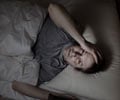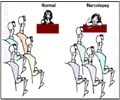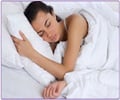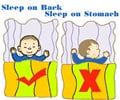How can we Diagnose Sleep Disorders?
An accurate history is very essential for diagnosing sleep disorders. A detailed history of a person’s sleeping habits, recorded in a sleep diary (which includes the time of going to sleep, the time of awakening and the time in between when he was awake), will give a clearer picture of a person’s sleeping patterns.
The following diagnostic methods help to evaluate sleep efficiency in a person suffering from sleep disorders-
- Epworth sleepiness scale is a self assessment tool, in which a questionnaire is filled out by the patient and it estimates the likelihood of falling asleep in different situations. This permits a standardized subjective assessment of daytime sleepiness.
- Polysomnogram is an overnight sleep study conducted at a sleep laboratory. It involves multiple tests that are conducted simultaneously on a person.
- Electroencephalogram (EEG) during sleep- The EEG gives the specialist the exact picture of the stages of sleep, its extent, and arousal rates.
- Electrocculogram (EOG) - A study for eye movements during sleep. This helps the examiner to score rapid eye movement sleep (REM).
- Electromyogram (EMG) - The EMG helps to score the presence of REM sleep, because in this stage of sleep there is skeletal muscle atonia which makes the jaw muscles to relax.
- Electrocardiogram (ECG)
- Air flow- A device is placed near the patient's nose and mouth to measure airflow. The airflow ceases when there is an obstruction to airflow and this helps to score apneas and hypopnea.
- Chest and abdominal movement- Special belts are placed around the patient's chest and abdomen to detect and record the rising and falling movements associated with the respiration. This helps to score apneas and hypopneas in sleep.
- Blood oxygen levels- The blood oxygen levels are lowered when there is airway obstruction as in the case of obstructive sleep apnea.
- Leg movements- Electrodes are pasted to the lower legs to measure leg movements, which may indicate the presence of periodic limb movement disorder.
- Multiple Sleep Latency Test (MSLT) - The parameters employed for polysomnography are used in this test too and this test is carried out for 20 minutes every two hours during the day. This test measures the individual’s ability to fall asleep when conditions are favorable for sleep.
- Multiple Wake Test (MWT) - This test measures a person’s ability to remain awake and helps to assess the effectiveness of stimulant medications used.














